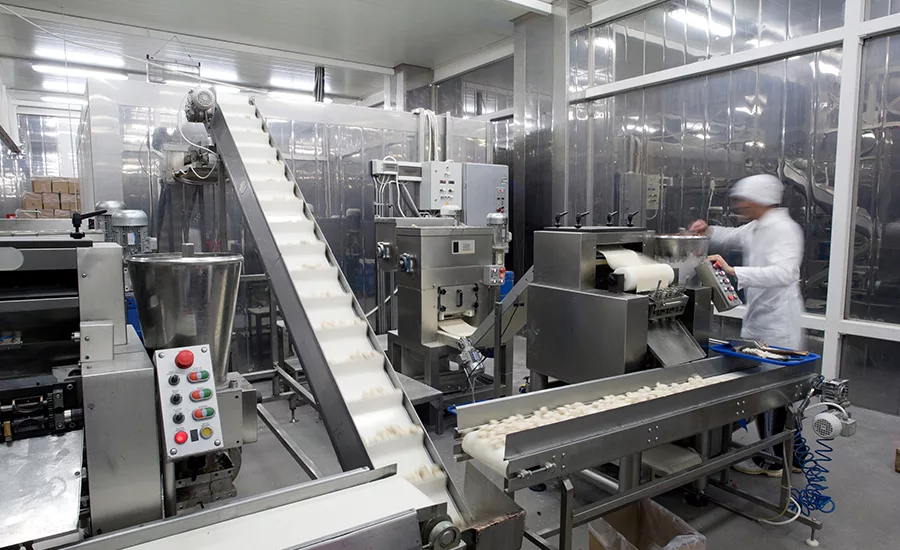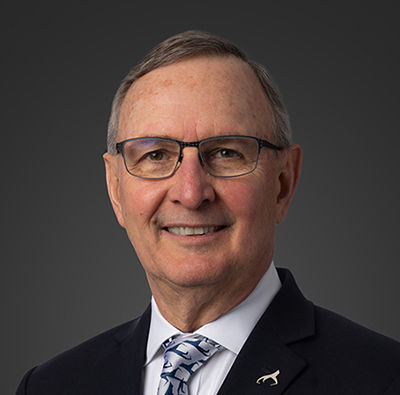What Does Your Maintenance Regimen Look Like?
We spoke to Craig Souser, president and CEO of JLS Automation, about best practices regarding maintaining top overall equipment effectiveness.

Image courtesy of Getty Images / IP Galanternik D U
A line not running at optimum efficiency and producing less than expected might only be second to unplanned downtime in terms of headaches faced in manufacturing—both of which can be caused by a weak link in the production line. We spoke to Craig Souser, president and CEO of JLS Automation, about overall equipment effectiveness (OEE), about maintenance best practices and strategies to use in order to keep a line operating at its fullest.

About Craig Souser
Craig Souser is the president and CEO of JLS Automation, a leading supplier of hygienic robotic packaging systems for the food industry. Souser has a BS in business and economics from Lehigh University and studied electronics/digital design at Penn State York. He speaks frequently on the topics of automation and robotics and is passionate about the future of robotics in our society and supports a number of robotics/STEM activities in the community.
FE: How can food manufacturers determine whether or not their machines are running at peak performance?
Craig Souser: There should be original equipment manufacturer specifications when the machine was new that would determine what the potential operating efficiency of any given machine is.
What you've got to do is study it for a long period of running, let's say, if not days, maybe a week, and determine if the equipment is running effectively, ie, that it's producing the lines, producing good products and good packages. So it's really the combination of yield and uptime that are going to determine if you're if you're operating in a reasonable and productive way.
But, I need to comment that not all machines are created equal or all aligned because what might be an anticipated OEE level for one product or production line—especially with food where there's so much variability—it may not be a suitable number or value to try to target universally.
For example, we've done work in non-food applications with plastic parts for plastic items, like putting lids on packages. Those operating efficiencies are very high and need to be very high because it's a molded item—there's high uniformity. There are only a few reasons why something might not be in spec, whereas with food, it doesn't take much for any item to move out of spec.
FE: Is there any one point in the process that might be of greater importance then than another in a food processing plant?
CS: I think the question should be “Is there any one point that’s more vulnerable?” and the answer is that there probably is. For example, there's historically been a big debate—and I think it'll go on forever—about whether or not a company should have a buffer or need redundancy if it has really good equipment. I wouldn't agree with that.
I think buffers and accumulation systems absolutely have a place. If I have a machine that’s part of a line that's going to go down or not operate well, I might want a buffer product or to accumulate product to feed that machine later when the operation is back to its full potential.
I think that's a really good investment, and it will help the overall equipment effectiveness. The same thing is true with redundancy. If I have something, let's say a flow wrapper, and I have to do a film change or have a problem with the film and I've only got one wrapper, I have no option.
In many cases where you see a customer use a four plus one scenario, they have five wrappers but only run four at any given time. So if one goes down, I automatically change over and use wrapper five.
That keeps the line efficiency very high, but it’s a bigger investment—it takes more maintenance of parts, etc. But we often see companies talk about choke points where accumulation might be needed if that one part of the line goes down, and it needs to accumulate or buffer product to use later—or do I just put in redundancy to deal with it?
FE: Is there any right or wrong way to approach maintenance?
CS: You don't want to be reactive. If you can avoid it, sometimes things happen that are expected. But, again, the original equipment manufacturer should be able to help the producer determine what is an effective preventive maintenance regimen, what parts need to be addressed, what areas of the machine need attention and with what regularity.
If that's set up and put in place properly, then things like we were talking about earlier where when a machine was new and running great, producing great product, and was always able to run when it was needed to a machine that’s not so productive or reliable anymore now it's not anymore, you have to ask, “Was it maintained properly? Was there a good preventive maintenance process in place?” If the answer to those questions was “No,” then get one.
It's so much less expensive in all areas to say okay, I'm going to either do this maintenance on my own or, as in many cases with our equipment, the customer will have us come in and help them work with the maintenance folks to go through the machine and make sure everything's appropriate on a set interval to keep it operating in spec.
I just think it's a fantastic investment that, over time, is a lot less costly than suffering unexpected downtime.
FE: Do you think that a food manufacturer needs to rely on an OEM to help understand a machine and keep it running right?
CS: Absolutely, yes. That's why selecting a good partner or OEM partner for a food company is so important. Always ask “Do they have experience with this type of equipment?” “Have they made equipment like this before and provide a preventative maintenance schedule or can come in and do it for us?”
We get asked this a lot with robots. They're becoming much more mainstream, of course, but they're not traditional machines for food companies, typically. So a food manufacturer has to ask if it has the staff to maintain one properly. They may not, so they're either going to have to get their staff trained or rely on the OEM to provide that service or some combination of the two.
FE: How do sensors and other pieces of technology that allow you to monitor elements of a machine come into play?
CS: They’re very useful because, again, you can get out in front of issues. With sensors, the machine now can provide you feedback to operators with messages like, “Hey, this this motor is starting to draw more current,” or, “This motor is starting to get hot.” They can essentially tell you if you've got something going on mechanically that that needs attention.
Maybe it's a bearing or a gearbox that needs grease or a lubricant change or a conveyor that's too tight—that kind of diagnostic is often built in. And, of course, that information can be forwarded to the maintenance department. That information could be on a plant network or, ideally, deployed such that the OEM and maintenance staff could look at it remotely—a good piece of equipment with good sensors and good software can diagnose a problem before it happens.
FE: Is it worth the investment to add monitoring to a legacy machine without monitoring capability, or do you think it's better to stick with the OEM manual to identify areas where the machine could break?
CS: I think I think there is a value. Obviously, there's a lot of qualifications that would go into it, but I really do think there's a value. There are a lot smart sensors available these days, and they're worth a look—maybe the OEM even has experience with retrofits.
You can't just always say, “Well, since I can't monitor this, I'm going to buy a new machine.” Certainly there are things that could be done, and I know of users who have done some pretty simple things in terms of adding sensors to detect issues. It saves huge amounts of money with a minimal investment.
FE: Is there any type of food or beverage manufacturing process that stands to benefit most from a strong maintenance regimen?
CS: I think it's universal. And, again, I think there are some that are going to be more difficult or more challenging to get to a high level, but it's all relative. There has to be an agreed upon bottom line or realistic target. You can't put your expectations into the clouds and expect to do as well as a non-food item, necessarily. But the mindset, the discipline of trying to achieve higher and higher operational efficiencies is universal—every producer can benefit from that.
Looking for a reprint of this article?
From high-res PDFs to custom plaques, order your copy today!





